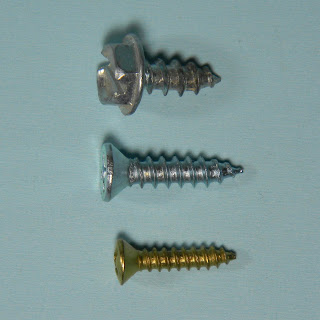You would not, unless you like to gamble on almost anything.
But for the November election here in Idaho there is
Proposition 1 - ludicrously
given the brief ballot title of
An Initiative Authorizing Historical Horse
Racing at Certain Locations Where Live or Simulcast Horse Racing Occurs and
Allocating Revenue Therefrom (and also titled the
Save Horse Racing in Idaho
Act).
Whenever we see an unusual word like THEREFROM we can smell
that attorneys are telling us a pile of horse manure. This is the latest try to
get back to a form of gambling which had been passed by our state legislature
in 2013. In 2015 they came to their senses and passed another bill repealing
it. Then our governor tried to veto that bill, but he waited too long.
How does Historical Horse Racing (HHR) work? The
Wikipedia
article titled
Instant Racing explains that play begins when a customer
deposits money in a terminal (resembling a slot machine), and a race is
randomly selected from a video library. The customer is NOT shown details like
the date and location of the race – just some information about the jockeys and
trainers winning percentages. Based on that handicapping information the
customer makes a pari-mutuel wager on the outcome (top three finishers in
order). Then the customer sees a brief video clip of the finish (perhaps just a
two-inch square).
A combination of money and politics creates peculiar rationales.
Up north, the Indian casino operators who already have slot machines oppose
Prop 1. (
Paulette Jordan, the Democratic candidate for governor, once was
co-chair of gaming for the Affiliated Tribes of Northwest Indians [ATN]). At
the
Idaho Freedom Foundation (IFF) their chief honcho Wayne Hoffman supported
Prop 1 with
an article titled
Prop 1 gives voters a chance to save an industry
that politicians have nearly destroyed, which also was published as
a column in
the
Idaho-Press Tribune. His stance contradicts the IFF’s
statement that it:
“…exists to advance conservative principles – limited government,
free markets and self-reliance – [that] made our country the envy of the world.”
Prop 1 instead has the government intervene in the market by
granting a special privilege to some (which hardly is supporting self-reliance).
But that’s OK, since they really are opposing a liberal Democratic candidate. By
the way, the
Idaho-Press Tribune had
an editiorial against Prop 1 titled
Vote ‘no’ on horse racing slot machines.
If Prop 1 passes, then who else might line up to ask for
similar forms of gambling with terminals resembling slot machines? First, there
could be Historical Rodeo Riding (HRR). An eight-second ride is short enough to
show completely on a video.
Second, there could be Historical Car Racing (HCR) in both a
drag race version (short enough to show completely) and a longer, boring oval
track (NASCAR or Indy Car) version.
Third, sports bars could ask for Historical March Madness
(HMM) with betting on either the Elite Eight or Final Four in the Men’s NCAA
Basketball Championship.
Fourth, movie theaters could ask for
Historical Movie Endings
(HME). Bet on which characters will survive until the end of a slasher movie
like one of the ten in the
Halloween series. (Don’t ever bet against Jamie Lee
Curtis!)
And so on!






















